Helping kids cross the digital divide
March 7, 2012
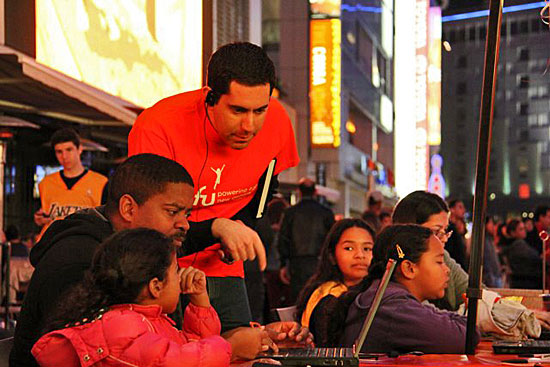
CFY leader Neil Spears gives personal tech support to kids and parents during a training event this winter.
A well-rounded education increasingly requires knowing how to use computers and the Internet. But the cost of equipment means students from low-income families can sometimes get left in the silicon dust. The nonprofit group CFY Los Angeles aims to bridge that technology gap, and is looking for volunteers to help serve San Fernando Valley schools.
CFY gives families home computers loaded with educational software and holds community training sessions to teach the best ways to use them. The group also maintains Power My Learning, an online site that curates the best educational activities on the web. CFY Los Angeles co-director Neil Spears said these efforts take education beyond the classroom.
“It is changing the whole learning dynamic at home. Eighty percent of our parents have no degree past a high school diploma. Now they can sit down with the student to help solve particular kinds of problems.”
Since the L.A. chapter of CFY opened its doors in 2008, it has brought its program to Los Angeles Unified School District schools in low-income communities, focusing on 6th graders. This year alone, the group expects to serve 7,000 families at more than 30 area schools.
For teachers, part of the program’s appeal is an ability to monitor homework a little better. The minutes kids spend using the programs are logged and provided to teachers, parents and students.
Kids aren’t the only ones learning. Parents also are using the service to educate themselves, said Spears.
Of course, the benefits of having a home computer go beyond education. With Internet access, tasks like paying bills and communicating with loved ones also become easier. The program doesn’t currently help families get discounted Internet service rates in L.A., as it has elsewhere. But it has prompted many sign up on their own, Spears said.
“These days, you need a computer and the Internet just to apply for many jobs,” said Spears. “The Internet is as essential today as having a phone was 30 years ago.”
Elisabeth Stock, a former White House staffer, founded CFY in New York in 1999 after noticing piles of government surplus computers gathering dust. Since then, the organization has provided home computers to more than 50,000 families. Formerly known as “Computers for Youth,” the organization changed its name to CFY last year in recognition of the fact that hardware is only part of the service it provides.
Interested volunteers can help CFY Los Angeles conduct training classes at Madison Middle School in Van Nuys on Saturday, March 10, and Saturday, April 14, or at San Fernando Middle School on March 17. To sign up and get more details, email [email protected].
Volunteers show up for orientation at 8 a.m. for morning sessions and 11:30 a.m. for afternoon sessions. They help families attending the four-hour workshop by assisting with individual issues and providing a more personal experience. No technical knowledge is needed, and volunteers receive a free T-shirt.
For another way to help, CFY is always looking for old desktop PCs to refurbish. Businesses interested in donating outmoded technology should email Neil Spears at [email protected].
Posted 3/7/12
Big screen, big sounds at Royce Hall
March 7, 2012
If you’re hankering for a taste of old school Hollywood—or inspired by the Academy Awards’ Best Picture winner The Artist—it doesn’t get much better than this.
UCLA’s Royce Hall is presenting Tillie’s Punctured Romance, a 1914 silent film believed to be the first full-length movie comedy. The score will be provided live, on the Hall’s Skinner Organ, played by Steven Ball.
The rare film, starring Charlie Chaplin, was restored in 2004 and is currently preserved in UCLA’s Film and Television Archive. In it, Charlie convinces the daughter of a wealthy farmer to abscond with him for some big city hijinks, only to abandon her there for another girlfriend. Later, he is tricked into pursuing her again after hearing she has just inherited a fortune.
Ball began playing the organ at age 12. He is a master and scholar of the theatre organ, and received a doctorate in organ performance from the University of Michigan.
The film and performance is Saturday, March 10, at 8 p.m. Tickets range from $15 to $45 and may be purchased online. Visit the UCLA Live website for parking and directions to Royce Hall.
Posted 3/7/12
A true escape route for women in jail
March 7, 2012
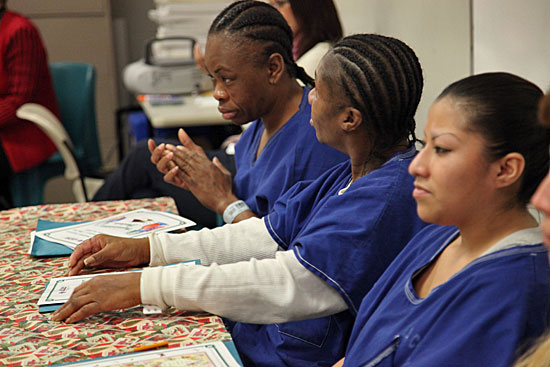
Female inmates in the county's jail system can take part in a new and potentially transformative program.
Inside Dorm 3500 of the county’s Century Regional Detention Facility in Lynwood, an experiment in personal reinvention is about to unfold.
The dorm’s 124 residents—all of them female inmates of the Los Angeles County jail system—will be embarking on a new program dedicated to the proposition that women and men take very different paths to jail and need very different kinds of help to address the underlying causes that landed them there.
“Women come into the incarcerated life differently than men do. The majority of women have some kind of abuse in their background—physical or sexual. I hate to use the term ‘victim,’ but in many cases they are,” said Sgt. Christina Baker of the sheriff’s inmate programs unit. Those physical, sexual and emotional traumas often lead women to substance abuse, which in turn brings a host of criminal and other behavioral problems.
The Sheriff’s Department’s new “gender-responsive” program aims to give women—often for the first time in their lives—a chance to recognize and change those destructive patterns. “It’s basically a chance to reinvent themselves,” Baker said.
Although women inmates make up just 10% or so of the county’s jail population of around 20,000, they tend to be avid consumers of self-help and other programs, Baker said. Women “want that education, that life-changing element,” she said, noting that male inmates, by contrast, are often “wrapped up in jail politics” and afraid that taking part in programs will mark them as weak.
Karen Dalton, director of the sheriff’s Inmate Services Bureau, said she participated in a trial session of the program and found the hands-on, small group activities eye-opening, such as a session that used photos in magazines to connect with women’s feelings about themselves. “It’s a very interactive way of getting people to think differently about themselves, and not use the trauma as a crutch,” she said. “We’ve wanted this for a very, very long time.”
The women’s program, the first of its kind in the Los Angeles County jail system, will include one-on-one assessments, life skills training, domestic violence education, substance abuse recovery, behavioral therapy and other elements—all aimed at having an impact that goes well beyond individual inmates.
“It’s not just about the women,” said Renee Smith, who directs women’s services for Haight Ashbury Free Clinics-Walden House. “Women have babies, and families. It’s also about stopping the cycles for generations.”
Smith’s organization this week was awarded a contract to run the program for three years, with an option to continue for an additional 2½ years, at a total cost of up to $3.5 million.
Smith said similar programs have been run in the California prison system, and on a smaller basis in the San Francisco jail. The L.A. County program, to be offered first to female inmates who already have completed all available courses in the jail educational curriculum, is notable for the “constellation” of services it will offer.
“This is really a full program. This is what you’d get if you walked into residential treatment in the community,” Smith said. She said the women will be learning everything from “mindfulness” skills to how to write a letter to an estranged family member to the basics of navigating bureaucratic systems—“when to keep your mouth shut and when to speak up when you have a need.”
Unlike state prisoners serving lengthy sentences, county jail inmates tend to come and go more quickly. The average jail stay currently is about 44 days, although that’s likely to increase as prisoners who previously would have been sent to state prison instead do their time in county jail under the process known as realignment. And, at least as far as rehabilitation programs are concerned, that may not be a bad thing.
“The longer they’re here, the more treatment they receive,” Sgt. Baker said.
Stephanie Covington, who co-directs the Center for Gender and Justice and is a nationally-recognized leader in the field, said the criminal justice system has not always been so open to the notion of giving women inmates treatment geared to their backgrounds and needs.
“In the last 10 years, there’s been a growing understanding of the need for women to have different kinds of services,” she said. “It makes no sense to warehouse people.”
And, she said, even relatively short-term programs can make a difference.
“It’s time you can plant seeds,” she said. “You can help people see there are other options.”
Posted 3/7/12
End of the road for beloved bookmobile
March 7, 2012
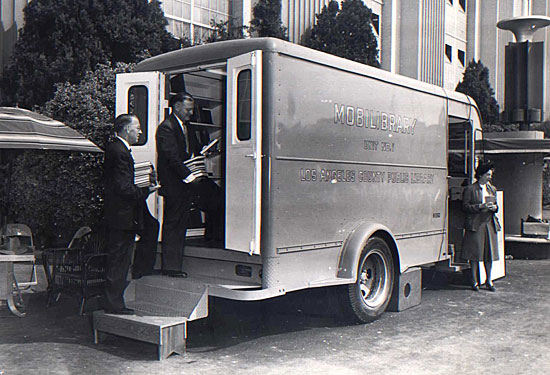
L.A. County's first bookmobile at the 1948 County Fair, with 3rd District Supervisor John Anson Ford (left) and County Librarian John Henderson.
When one chapter opens, another closes. This week, as Topanga breaks in a new, state-of-the-art library, the county will bid farewell to another cherished institution—the Las Virgenes bookmobile.
Twenty-eight feet long and stacked to the rafters, the traveling library has rumbled through the Santa Monica Mountains for generations, serving canyon- and hill-dwellers from Malibu to the Mulholland Highway.
“A lot of people will mourn the loss,” predicts former community library manager Donna Serra, who retired in 2010 after more than a decade as the Las Virgenes “bookmobile lady.”
“People from all walks of life have used that bookmobile. Families, academics, homeless people. People would come and bring their dogs inside with them. When we’d go to Topanga, so many people would come that we’d have to put up a sign saying only so many people could be inside the bookmobile at one time. They even used to put us in their parades.”
On Friday, when the bookmobile finishes its last stop—from 1:30 p.m. to 3: 30 p.m. at Hidden Hills City Hall—its route will be eliminated, leaving only four bookmobiles in the Los Angeles County system. County Librarian Margaret Donnellan Todd says it’s a casualty of time and success.
The vehicle itself is nearing the end of its life span, she says, and the library system has managed in recent years to shore up many of the brick-and-mortar facilities near the mountains.
“We now have the Malibu library, which will reopen in April after a full renovation,” Todd says. “Then there are the libraries in Westlake Village and Agoura Hills, which are both fairly new. The City of Calabasashas a new library, and now there’s the new Topanga library, of course.”
Bookmobiles first caught on in the United States around 1900, when a librarian in rural Maryland used horse-drawn wagons to expand local library service. After World War II, Congress began subsidizing them as a way to bring literacy to rural America. At their peak, some 2,000 were in use nationally. A bookmobile nicknamed “Little Toot” served children in the City of Los Angeles through the 1950s; by the 1960s, there were eight bookmobiles in the Los Angeles County fleet alone.
Since then, though, bookmobile use had gradually dwindled, largely due to rising gas prices, suburban development and the Internet. In 2008, according to the National Library Assn., only about 930 remained on the road nationally, including 69 in California.
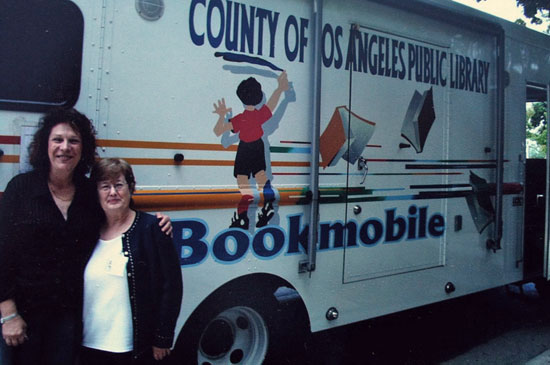
The Las Virgenes "bookmobile lady," Donna Sera, left, seen here several years ago with Raya Sagi, formerly of the Agoura Hills Library.
Libraries have been reluctant to get rid of them entirely, and the National Library Assn. still celebrates National Bookmobile Day. In 2009, Los Angeles County added a bookmobile route in the rural Antelope Valley, where three of its vehicles are now assigned, and its fourth—an urban outreach bookmobilethat mostly serves senior communities and housing projects—is among the most popular in the county.
But most parts of Los Angeles now have branch libraries within easy driving distance, Todd says, and most bookmobiles lack the breadth and digital access that brick-and-mortar libraries now offer. The Las Virgenes bookmobile only carried about 2,500 books, CDs, DVDs and other lendable items, while the new library in Topanga alone stocks tens of thousands.
Serra, the retired librarian, says the bookmobile’s limitations were part of what patrons loved about it. In fact, she says, when the traveling library began electronically tracking overdue books, many patrons pined aloud for the days “when you could just sign your name on a card and that was enough.”
Readers may not have had as much to choose from, says Serra, but she made up for that in personal service. Sometimes, she says, she and bookmobile aide William Moore would drop a bag of books at the home of a sick patron, or use their own cars when the bookmobile was broken down or stopped by inclement weather.
Each week, she says, she and her fellow staffers would load up the lumbering vehicle with items they had personally chosen for patrons.
“There was Uncle Dale, a photographer in the movie business who had a lovely little daughter, Fiona,” recalls Serra. “We’d find special things for her, things with princesses and fairies, but also classics like “The Three Musketeers.” And there were the Portmans, another great family—voracious readers. Mrs. Portman would come in and we’d have 50 books set aside, waiting for her.”
Over the years, Serra says, she came to know the minds of thousands of patrons, from celebrities who would wander up the bookmobile stairs incognito to homeless bookworms from Malibu Creek.
One soul, a courteous transient named Daniel, came in regularly for two years to renew “The Complete Writings of Thomas Paine,” she remembers. Another patron made such delicious homemade tomato relish that the staff stocked her favorite authors—J.D. Robb, Iris Johansen—just to ply her for the recipe.
Pets were welcomed, she says, and one of her favorite Topangans perused the stacks for years with a Tennessee squirrel hound named Lily, looking for volumes on spirituality. When the woman died in 2008, Serra went to the memorial service.
“For my birthday one year, she gave me an ancient Sanskrit poem written in calligraphy, about looking forward to each day and living to the fullest,” says Serra. “I still have it here in my house with me.”
Serra predicts it will take time for her former patrons to get used to a library that isn’t on wheels: “They’re a unique group, people who use bookmobiles.”
But Todd, the county librarian, says that the Las Virgenes bookmobile will have its own next chapter: After Friday, it will become either a backup bookmobile or be dispatched as an “express library” to sites undergoing renovation.
“It’ll have a nice part-time job—not a lot of stress, not a lot of mountain roads,” she says, laughing. “I suppose you could say that it will be enjoying its retirement years.”
Posted 2/22/12
We know it’s only rock ‘n’ roll but…
March 6, 2012
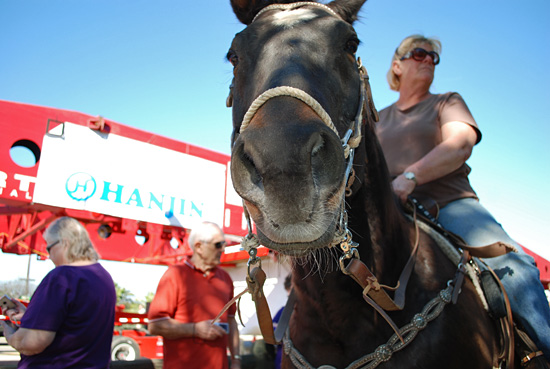
Don't expect to see any horses when The Rock arrives in Long Beach, its first urban stop in its journey.
It’s a long way to the top, as AC/DC would put it, but the big city star treatment is about to begin for The Rock.
After wending its way for more than a week through cow pastures, truck routes and far-flung suburbs, the 340-ton centerpiece of Michael Heizer’s new “Levitated Mass” sculpture is finally beginning the urban leg of its trip to LACMA.
From here on in, “it’s going to be a real rockapalooza,” predicts Blair Cohn, executive director of the Bixby Knolls Business Improvement Association, which will be hosting a daylong welcome bash on Wednesday in Long Beach. Pulled together at the last minute with the help of Long Beach City Councilman James Johnson, the party will feature food, games, live music and a DJ playing songs with the word “rock” in the title from noon until 7 p.m.
Cohn says song requests and ideas have been pouring in all week via email and Facebook. “It’s the talk of the neighborhood.”
The bash will mark The Rock’s first stop in a densely populated part of Southern California since last Tuesday when it left its quarry near Riverside. Riding in a massive red transporter and traveling only by night, it has mainly stopped on surface streets and lots on Los Angeles’ outskirts, and its reception has mostly been one of open-mouthed wonder.
On Wednesday, however, it will spend the day on Atlantic Avenue between 36th and 37th Streets in the urban heart of Long Beach. From there, it will move to Vermont Avenue near Harbor-UCLA Medical Center, then to Figueroa Street north of Florence Avenue near Exposition Park and finally to LACMA late Friday night and early Saturday morning.
Long Beach officials say they saw The Rock’s stop as an opportunity both for fun and culture.
“Right away, I took out my notebook and started brainstorming,” said Cohn. “Rock painting, pet rocks, Pop Rocks, Rocky Road ice cream. Rockstar energy drinks. Rock-Paper-Scissors tournaments.”
The party will feature all those attractions, plus two live bands and Bill Child, a disc jockey who performs as (dj)misterbill at many of the events sponsored by the business improvement association. Child says he will be spinning not far from The Rock on the patio of Patricia’s Mexican Food at 3626 Atlantic Avenue.
Cohn hopes Child will kick things off with Queen’s “We Will Rock You,” but Child’s personal favorite is “I Am A Rock” by Simon and Garfunkel.
Also likely to make the long play list, Cohn and Child say: “Rock Lobster” by the B-52’s, “Rockin’ In The Free World” by Neil Young, “Rock With You,” by Michael Jackson, “Rock You Like A Hurricane” by The Scorpions, “Like A Rock” by Bob Seger, “R.O.C.K. in the U.S.A.” by John Mellencamp, “Sorry For Party Rocking” by LMFAO and “I Wanna Rock” by Twisted Sister, not to mention AC/DC’s famous caveat to those who “Wanna Rock And Roll.”
“But we’ll try to keep it as fresh as possible,” Child says. “There’s going to be a lot to choose from. Just say that anything with ‘rock’ in it will be played tomorrow. I’ll be there for seven hours, so you can count on it.”
Looking for a snail mail alternative
March 6, 2012

Just a few of the million-plus pieces of mail that the DPSS must, under federal regulations, mail to itself each year.
It may sound like a bureaucratic absurdity straight out of Dilbert: Los Angeles County’s Department of Public Social Services is paying hundreds of thousands of dollars to send itself more than a million pieces of mail each year.
But the reality is no laughing matter.
Federal regulations require the department to communicate with all recipients of CalFresh benefits (formerly known as food stamps) by means of paper mail.
Many homeless recipients list the department’s address as their own so that they may receive benefits. But often, they pick up their mail irregularly, if at all. And that has created mail backlogs and service delays at DPSS offices. The department estimates it spent at least $390,000 on such mailings last year.
So this week, the Board of Supervisors, acting on a motion by Supervisor Don Knabe, directed the Chief Executive Office and DPSS to explore whether there’s a legislative way around the regulations. The motion did not specify a timeframe for coming up with such a strategy.
If allowed to do so, DPSS proposes changing to a system in which people using the department’s address would receive electronic mail which they could access or have printed out for them at DPSS offices.
But altering the system could have some unintended consequences. Christine Khalili-Borna of the Public Counsel Law Center said creating email accounts could raise privacy concerns and might also make it harder for other county agencies, including Public Health, to reach homeless clients.
“This proposed motion might be a good option for those individuals who have the skills, ability and access to email,” Khalili-Borna said. “However, a large number of homeless participants—especially the most vulnerable, including those with mental health, developmental and literacy issues—do not have the skills or means necessary to access this crucial information.”
She said her organization would be willing to work with the county as it explores ways to change the current system. Her offer was accepted.
Posted 3/6/12
A rolling stone gathers new LACMA fans
March 4, 2012
Tony Gendrano has never visited LACMA, but on Saturday morning, 340 tons of the museum’s latest acquisition paid an eye-opening visit to him.
“I said, ‘What’s going on here?’” the retired Rowland Heights accountant marveled, opening the blinds of his upstairs window. There, on the other side of the pane, sat the top of the 2-story-high boulder that’s been making its way this week to the museum.
Covered in white shrink-wrap, it gleamed like the Matterhorn in its bright red transporter, so close that it seemed to be peeping into Gendrano’s master bedroom. Down the hill, traffic jammed and crowds jostled along Pathfinder Road, which runs along Gendrano’s back fence—and which, coincidentally, was The Rock’s designated pit stop for the weekend.
“We’d been following the news about the project, all the excitement,” said Gendrano, who spent 35 years at the county Department of Health Services before his 2009 retirement, “but I never thought it would get this close to our house. When I was still employed, I walked one time on the street near the museum, but for some reason, I just never went inside it.
“I will definitely go now, though. I’m curious,” he said.
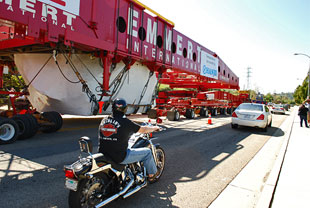
While hundreds of visitors intentionally dropped by Pathfinder Road to see The Rock, others came upon it accidentally.
The Rock’s 9-day odyssey across the Southland has been far more than a simple delivery from Point A to Point B. Since its late-night sendoff last Tuesday at a Riverside County quarry, the massive chunk of granite—part of “Levitated Mass”, a sculpture by earth artist Michael Heizer—has been gathering a whole new audience, both for LACMA and for art.
Gear heads have come to check out its transporter. Shutterbugs have taken its portrait. Schoolteachers have used it for lesson plans. History buffs have researched its provenance. Families have shown up with babies in blankets and grandparents in wheelchairs. Drunks have materialized at every stop, hollering and toasting. A Riverside County trucker proposed to his live-in girlfriend beside it. (“I wanted to give her a rock next to The Rock,” explained 35-year-old Ramon Vasquez III of Glen Avon.)
On Saturday morning, a man in a Rolling Stones t-shirt walked through the crowd calling it “Mick” (as in Jagger) and two Rowland Heights women rode up to it on horseback. Long lines of motorists drove by the transport apparatus, filming it on cell phones and yelling things at it.
“Roooooooooock!!” a carload of young men roared, revving their engine, as the boulder’s security detail looked mildly alarmed.
Many of the visitors say the spectacle has made them aware of the Los Angeles County Museum of Art for the first time; this has especially been the case at the early Inland Empire and East San Gabriel Valley stops. More than 60 percent of LACMA’s visitors come from within Los Angeles County, according to museum statistics, and so far, not one of the congressional districts The Rock has passed through has more than 500 paid LACMA members. By contrast, the Mid-Wilshire-to-Malibu congressional district in which LACMA is situated has more than 17,000.
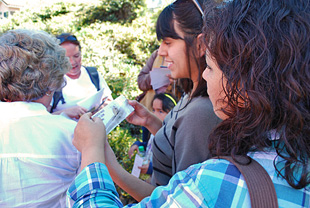
Taking advantage of the crowds, LACMA staffers passed out everything from bookmarks to free tickets.
“I can’t recall the last time I was at the museum, but I’ll probably go see this when it gets there,” said Irene Valenzuela, a purchasing agent for Smart & Final who was in the Rowland Heights crowd on Saturday with her husband, Art, and their granddaughter, Kaitlin Minton.
“I heard it cost, like, $10 million to purchase and transport it. For that kind of money, yeah, I want to check it out.”
LACMA officials didn’t engineer the enthusiasm, though they have come to view it as an opportunity as consciousness has built. Publicizing the move was initially tricky because permitting snags kept delaying the project. Also, several of the stopovers were on private property or in difficult-to-access locations.
Moreover, no one wanted the spectacle of the move to overshadow the finished sculpture. Until the boulder is fitted to a 456-foot-long concrete trench awaiting it at LACMA, it is only one component of Heizer’s artwork, which will allow viewers to walk underneath the megalith in such a way that it will seem to be levitating.
On the first night of The Rock’s journey, however, it became clear that this was one piece of public art that was destined to engage the public.
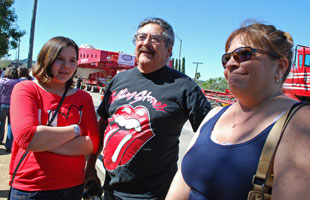
Rolling Stones' fan Art Valenzuela, with his granddaughter and wife, says LACMA's boulder should be named "Mick."
“What I really like is the way it’s making a public space,” observed Esther Amaya, a 20-year-old Cal Poly Pomona student discussing the boulder with her Whittier relatives at the Rowland Heights stop over the weekend.
“People are here talking, taking pictures, bringing their pets. Some are saying, ‘This is the stupidest thing I’ve ever heard of.’ Some are saying, ‘This is amazing!’ I think this is how you know it when you’re seeing great art.”
“Clearly, people are fascinated by it,” said LACMA Vice-President of External Affairs Terry Morello, noting that page views on the museum’s website have increased tenfold.
Docents have been on site at its stopovers since Wednesday, handing out informational bookmarks, free LACMA tickets and applications to NexGen, the museum’s free youth membership program. The museum also has reached out to schools with a downloadable “Levitated Mass” curriculum.
“We’ve easily given away hundreds of tickets,” said LACMA spokesman Scott Tennent, hustling to satisfy a crush of onlookers in Rowland Heights. “People seem so excited, not only about the artwork but also about the museum. Especially on the first nights, we met a lot of people who had no idea what LACMA was.”
Morello says that it is too soon to tell whether The Rock’s popularity will translate into increased financial support for the museum; the struggling economy has kept paid membership relatively flat for the last several years.
But museum officials have reason to be optimistic when it comes to increasing public involvement. In 2008, in concert with a major remodel, LACMA added another massive outdoor sculpture, an arrangement of antique street lamps by Chris Burden.
“Urban Light” is now an iconic Los Angeles artwork—and museum attendance has doubled in less than four years.
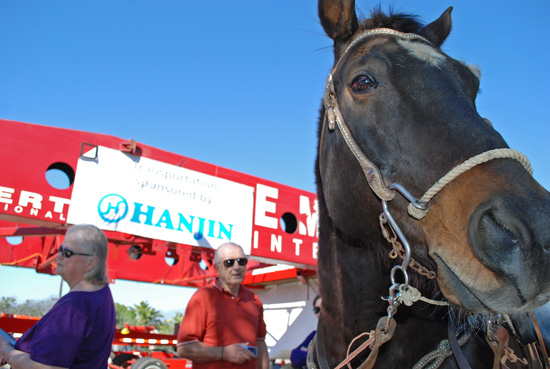
Among those in the diverse crowd in Rowland Heights was Guthrie, who trotted up with owner Debbie Scott.
Posted 3/4/12
And they say nobody walks in L.A.
March 2, 2012
There’s nothing like a brisk evening stroll to pump up your fitness. Ask Rick Albrecht. This week, he’s been averaging seven miles daily. In steel-toed boots. In the middle of the night.
Call it the Rock Walk. In a regimen that’s impressive even by Southern California standards, Albrecht and his coworkers have spent virtually every night since Tuesday on foot next to The Rock, carefully monitoring its 105-mile journey to LACMA.
“We may not look it,” the white-bearded 52-year-old joked as he waited to hit the road in a reflective vest and hardhat, “but we can out-walk just about anybody. Just by the nature of what we do, no matter what age we are, we’re in pretty good shape.”
A supervisor for Portland, Ore.-based heavy haul transporter Emmert International, Albrecht said that, even with breaks, he will personally cover 70 miles or more on foot by the time the boulder is delivered to the backyard of the museum in the wee hours of March 10.
And he’s not alone: More than a dozen crewmen will be walking beside him, escorting the 340-ton centerpiece of “Levitated Mass,” artist Michael Heizer’s new LACMA installation.
Although a handful of Emmert employees will be driving the massive red transport mechanism—a system of tractors, beams and cables within which the shrink-wrapped hunk of granite has been painstakingly cradled—the majority will be walking with radios beside the precious cargo, either remote-controlling various dollies or watching for potential slippage.
“Some jobs, you can ride alongside and watch from a pickup, but this is a specialized thing,” says crewman Joe Schofield, adding that he has mentally prepared himself to walk the entire distance, if necessary. “There’s so much going on that you have to walk or you can’t see it all.”
Schofield, also in his 50s, said the job has made him far more fit than most of his middle-aged neighbors in suburban San Gabriel, where he lives when he’s not traveling for his employer.
“I’ll do 30 miles on a bike when I’ve got nothing else to do,” said the bespectacled crewman, who says he thinks nothing of riding his beach cruiser to Long Beach and back just to see friends.
“People here say, ‘Oh, I’ve got to get to the gym.’ Oh yeah? Well, come out here and work with us a day. You won’t need to. When you’re handling big chains and moving blocks and walking five or ten miles a day, believe me, it does its thing to you.”
The boulder and its transporter together weigh about 1.2 million pounds; the move to LACMA from the Riverside County quarry where The Rock was blasted six years ago from the side of a mountain has been spread over 11 nights.
The cavalcade, which will move on surface streets through 22 cities and four counties, can only move between 10 p.m. and 5 a.m., and will not travel on Sunday. Its route is circuitous to avoid overpasses and bridges.
Five miles per hour is as fast as the apparatus will travel, so the pace isn’t bad, notes supervisor Charlie Prebble. And, he notes, the miles tend to fly by because the assignment is so high profile and critical. The transportation alone is costing millions of dollars, underwritten by corporate donor Hanjin Shipping.
Indeed, he says, this job’s workout is mild compared, say, to the 700-mile move they once did between Idaho and Montana, or the 14-miles they trekked in work boots, much of it in the sand, during a recent slow-speed delivery to the nuclear plant in San Onofre.
“You don’t get tired,” he says. “You can’t. You gotta keep moving. You only have from 10 to 5, so you’ve got to make the best of what you’ve got.”
Albrecht, whose brother Mark is the general manager of the project, said his family has been in the moving business for generations. “My father started out moving houses,” he says.
So what are Albrecht’s heavy-haul fitness secrets? Has he developed a stretching routine before his shift starts?
“Nope.”
Does he carbo load?
“Had a nice steak lunch today, that’s about it.”
What about blisters?
“After a while, you callous up.”
What does he do for variety in his off-hours?
“Ride Harleys.”
And when the sun comes up and another day of his marathon is over?
“You sit down and take your boots off and—ahhhhhhhhhhhhh. That feels good.”
Posted 3/2/12
Pushing jobs, not condos, at Universal
March 1, 2012
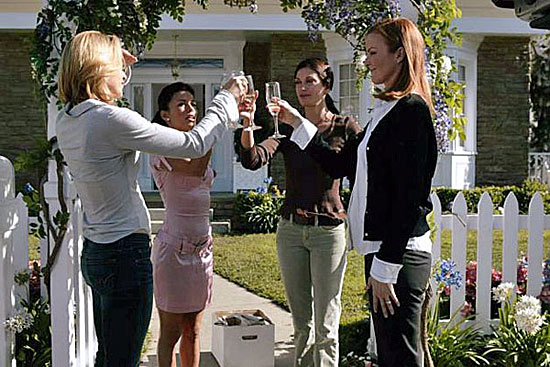
Parts of Universal's backlot, including "Wisteria Lane," above, would be moved under home plan. Photo: AP/ABC
NBC/Universal should drop plans to build nearly 3,000 housing units on its backlot, Supervisor Zev Yaroslavsky said this week in a strongly-worded letter to studio chief Ron Meyer.
While Yaroslavsky has previously criticized the scale of the Evolution Plan, this is the first time he has pushed the studio to drop the housing component altogether. Doing so, he said, would better position Universal for a future in which it remains a strong entertainment industry contributor to the L.A. economy.
“Abandoning that portion of your plan would make long-term economic sense for this region by ensuring that Universal will remain a full-service motion picture and television production campus and a major contributor to our regional economy,” Yaroslavsky said in his letter.
Building some 2,900 condos, lofts, townhouses and apartments on 124 acres of Universal’s property would cut into the studio’s backlot and require relocation of its famed “Psycho” house. It also would mean uprooting Wisteria Lane, the setting for “Desperate Housewives,” now in its final season, and Falls Lake, where movies including “Jaws” were shot.
Even without the housing element, the 20-year Evolution Plan remains a large-scale blueprint for how the studio proposes to grow on its 391-acre Universal City site.
The Entertainment Evolution portion of the plan calls for an improved studio tour, a 500-room hotel for CityWalk, upgraded movie theaters, restaurants and stores, and new theme park attractions. (Even as the Evolution Plan has been moving through the system, at least one big new attraction, the Wizarding World of Harry Potter, has been announced, although it is not expected to open for several years.)
Meanwhile, the Studio District Evolution component of the plan includes more than 308,000 square feet of new production space, 437,000 square feet devoted to new production support facilities and nearly 500,000 square feet of new office space.
In his letter, Yaroslavsky said that those new elements, along with current operations, would create more than 34,000 permanent new jobs, whereas just building homes would yield only 2,600. And construction and construction-related jobs, he said, would still number about 15,000 without the housing component.
“In short, the expansion of the studio’s production facilities and related entertainment uses will produce far more economic benefit to our region than the apartments and condominiums that are proposed to be built under the Evolution Plan,” Yaroslavsky said.
In fact, he said, establishing a large new residential neighborhood just feet from an active entertainment studio and theme park would only worsen complaints about noise, and, in time, could force the studio to cut back on production. That, in turn, could lead to a loss of entertainment industry jobs: “None of us could possibly want such a result,” Yaroslavsky said.
The company said in a statement it would consider Yaroslavsky’s comments, along with those of community members, as part of the ongoing environmental review process. A final environmental impact report is now being prepared. That report, along with other permits, must be approved at multiple levels of city and county government before the Evolution Plan can move into action.
Richard Bogy, executive vice president of Communities United for Smart Growth, a coalition of neighborhood and business groups affected by the Universal plan, said Yaroslavsky’s letter to Meyer “really says everything that we agree with.”
Using Universal’s land to grow its entertainment businesses makes more sense than allowing it to be used for housing, Bogy said: “It’s valuable land to the entertainment industry.”
While questions remain about the overall project’s impact on infrastructure, transportation and traffic, Bogy said, dropping the home-building plan would go a long way toward assuaging his group’s concerns.
“The one really big stumbling block in the plan,” he said, “has been the housing.”
Posted 2/1/12




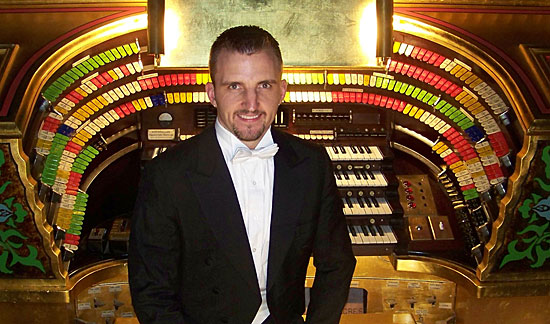
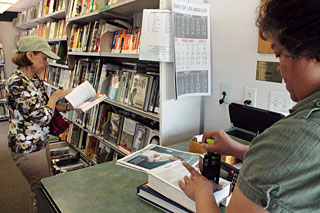
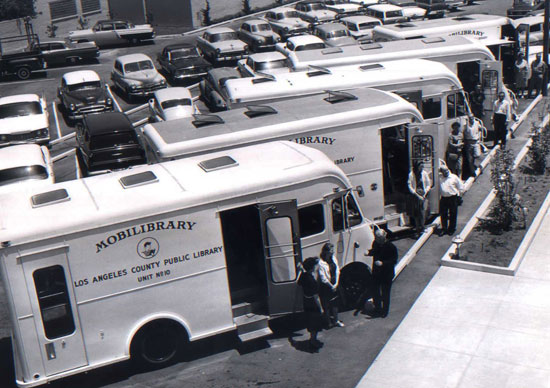
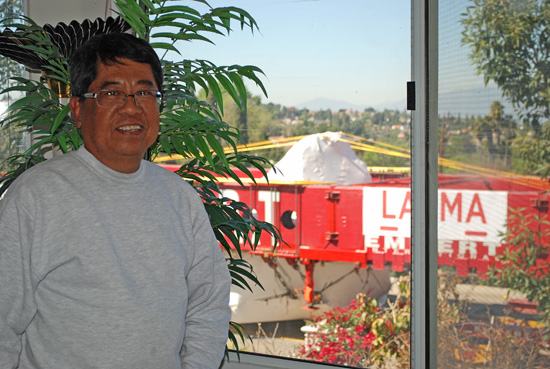
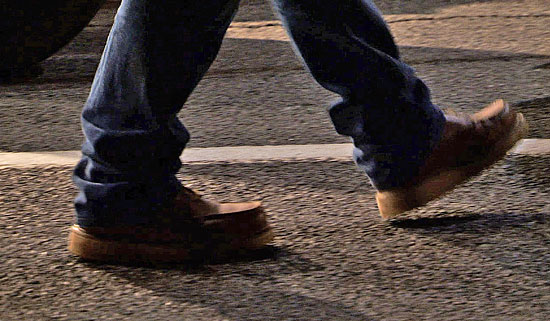
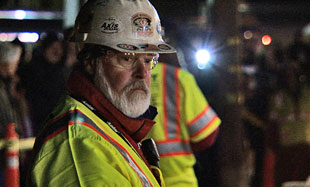






 Check for the latest closure information
Check for the latest closure information








